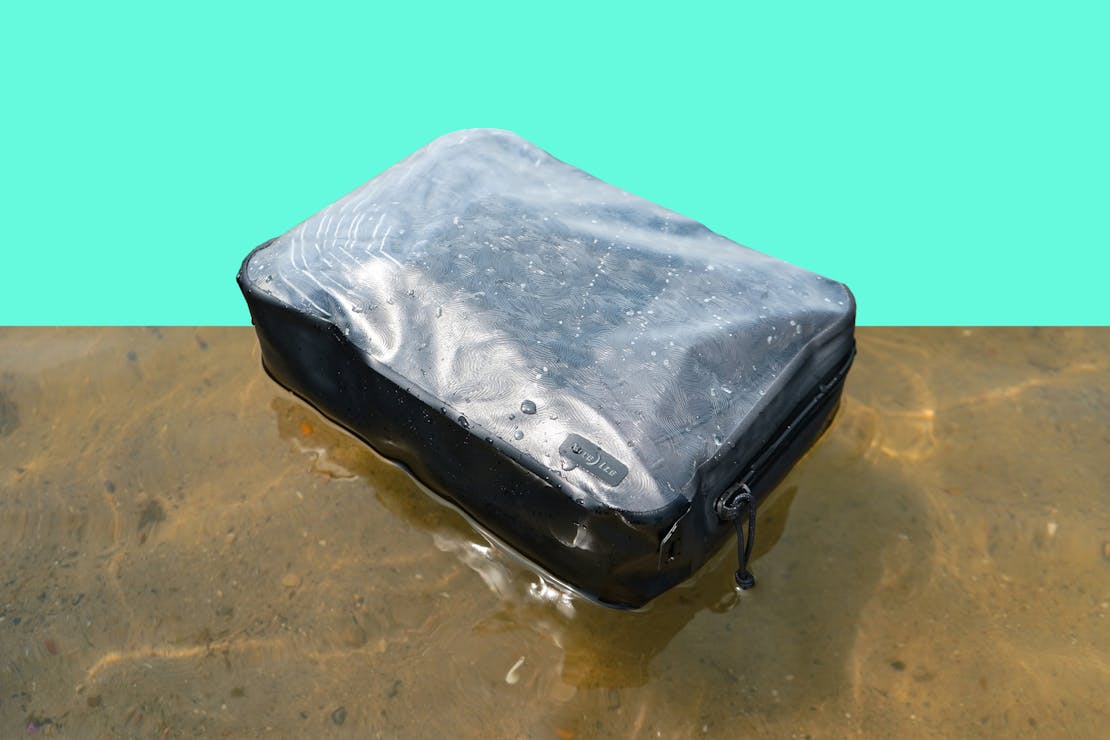If you’re reading this, you’ve likely been confused by the terminology regarding products like travel backpacks, pants, shoes, or a phone case. Waterproof, water-resistant, and water-repellent all sound the same, right? However, it’s important to understand the key differences before completing your packing list with gear for your next trip, whether you’re going to London or Laos.
In this post, we’ll explain the differences between waterproof, water-resistant, and water-repellant, how they’re tested, what IPX ratings mean, and common environmental terms you’ll see brands use when explaining their materials.
Table of Contents
- What does waterproof gear mean?
- What is an IPX rating, and why does it matter?
- The benefits of waterproof gear
- The drawbacks of waterproof gear
- What should I use waterproof gear for?
- What does water-resistant gear mean?
- The benefits of water-resistant gear
- The drawbacks of water-resistant gear
- Which is better: water-resistant or waterproof?
- Other things to consider
What does waterproof gear mean?
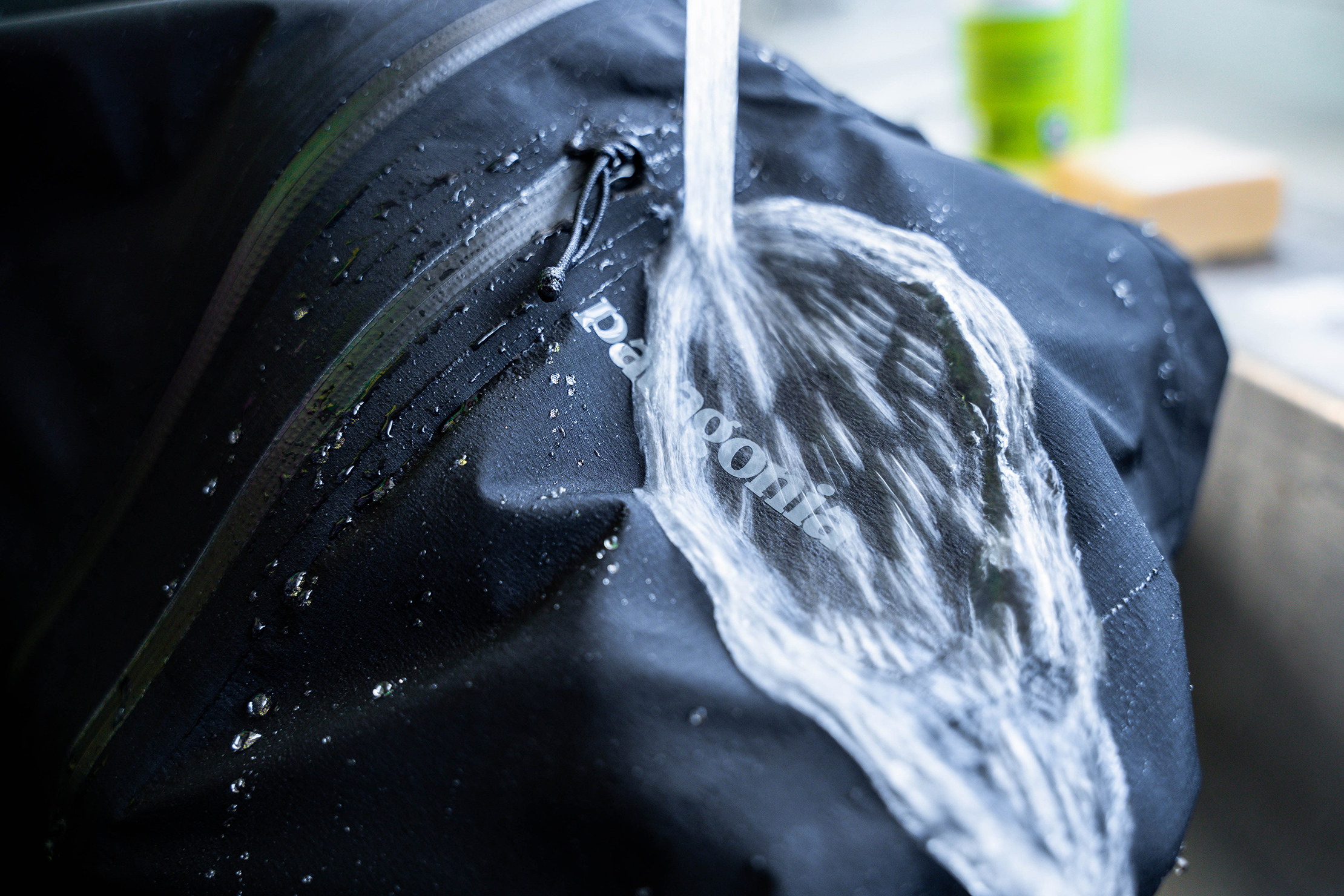
Simply put, water cannot penetrate waterproof materials, so whatever is on the other side (like your gear or skin) won’t get wet. However, that doesn’t mean the entire product is waterproof. Suppose a hiking backpack is manufactured using waterproof fabric. In order to be considered a waterproof bag, it would also have to utilize waterproof zippers, buckles, and seams. This often correlates with an IPX rating, which we’ll discuss in the post. Simply put, just because a product is made with waterproof materials doesn’t mean it’s a waterproof product, which is why you need to stay vigilant in how a brand uses the word waterproof.
Waterproofness is measured using a hydrostatic head test. Essentially, a piece of material or fabric is hit with water that mounts in pressure until penetration occurs. This focuses more on the makeup of the fabric and how well it stops water from penetrating through versus how well water repels off of it. While repelling water is a nice feature to have, stopping penetration will keep you and your gear dry in the long haul.
So what do the values mean? A hydrostatic head test is generally measured in kilopascals (kPa), a unit of pressure measurement equal to 1,000 pascals (Pa). The higher the pressure rating, the more resistant to penetration the material is, making it more “waterproof.” You’ll often see waterproofness rated in millimeter water or mm. The higher the number, the more waterproof it is.
When considering waterproof gear, a high kPa or mm is ideal; however, it’s essential to consider how quickly the material will degrade over time. A jacket with a high waterproofness rating but incredibly thin materials will likely wear out more quickly and lose its waterproofing faster, leaving you with a coat that isn’t thick or waterproof. There’s a balance to be found and depending on the trip you’re taking, you can likely find it. If you’re going somewhere warm and wet, you’ll need a more breathable jacket than if you’re going somewhere cold and snowy.
What is an IPX rating, and why does it matter?
Some gear, like certain electronics or bags, have an IPX rating. Similar to waterproofness, this measures how well things can handle exposure to water. However, this rating is specific to a piece of gear, not a particular material, so you don’t have to do as much mental math when purchasing.
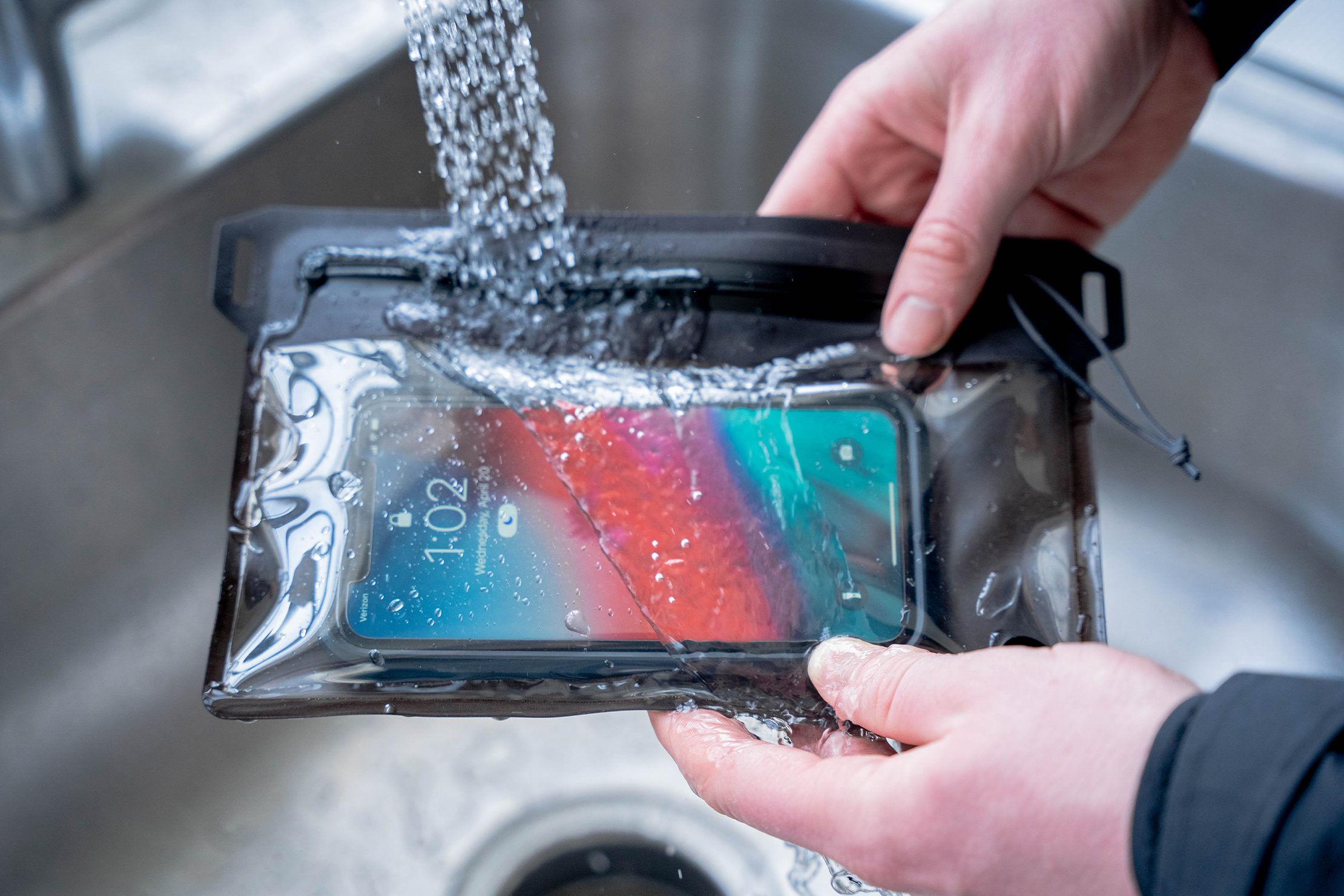
IP stands for Ingress Protection; the following two numbers explain how well gear does against solid objects and liquids.
The first number is ranked from zero to six and ranges from zero protection to completely dust-tight (indicated with a 6). An X means that it wasn’t tested for that.
The second number is ranked from zero to nine and ranges from zero protection to hot water sprayed at high pressure from all angles (indicated with a 9).
For example, gear with an IP11 rating has little solids and water protection, while gear with an IP69 rating is dust-tight and submersible.
That said, you don’t need every piece of gear to be submersible or completely dust-tight; that would be overkill. When buying a phone case for a kayaking trip, you want a high water rating but might not care as much about the solids rating. If that trip involves a beach that has tiny particles, you might care more about the solids rating. For context, the iPhone 15 has an IP68 rating.
The benefits of waterproof gear
Waterproof gear has many perks. First, you and your belongings will stay dry, which is likely the reason you came to this page. Waterproof gear will keep rain, snow, splashes, and other potentially damaging water at bay.
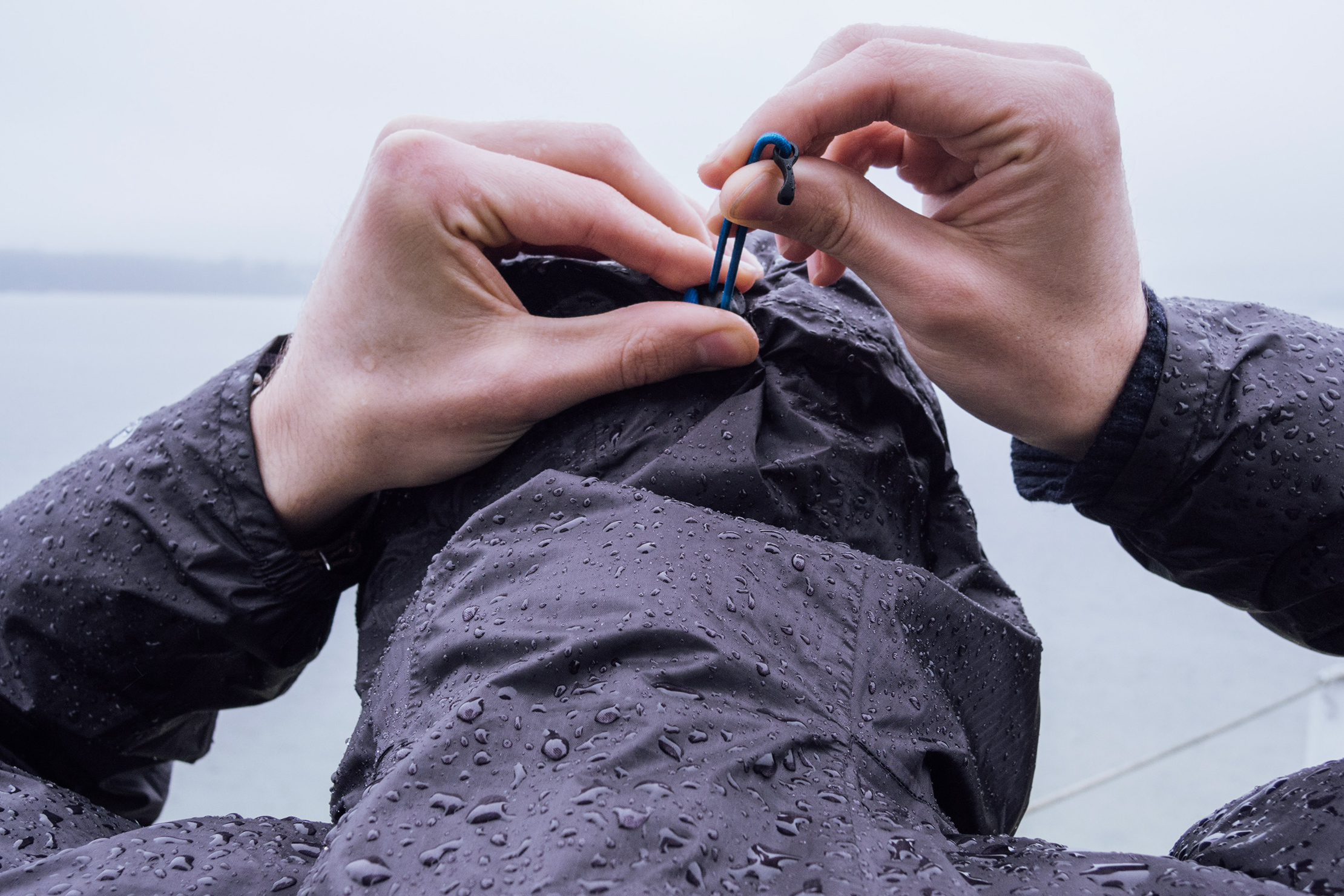
If you get blisters quickly, investing in waterproof gear (like shoes or pants) can ensure your feet don’t get wet and blister from friction.
Additionally, waterproof gear tends to be thicker and offers more protection from the sun, which will ensure you don’t get sunburned in areas covered by waterproof clothing. This can also protect the gear inside your bag from sun damage. Waterproof doesn’t necessarily mean a higher UPF rating, but there’s a trend there.
The drawbacks of waterproof gear
All those positives come at a cost, literally and figuratively. First, waterproof gear is often priced much higher than gear that doesn’t deflect water. That doesn’t mean you must pay an arm and a leg for waterproof gear, but durable, long-lasting waterproof gear is often expensive. You’ll likely spend less money overall if you buy one high-quality product instead of replacing a cheaper version every few years.
Additionally, if something is waterproof, it often isn’t very breathable. This is a balancing act, like the thickness-to-waterproofness scale we mentioned earlier. Finding something breathable normally negates some of its waterproof features or makes it thinner, so it’ll degrade faster. You have to find something that works for you and the kind of traveling you do!
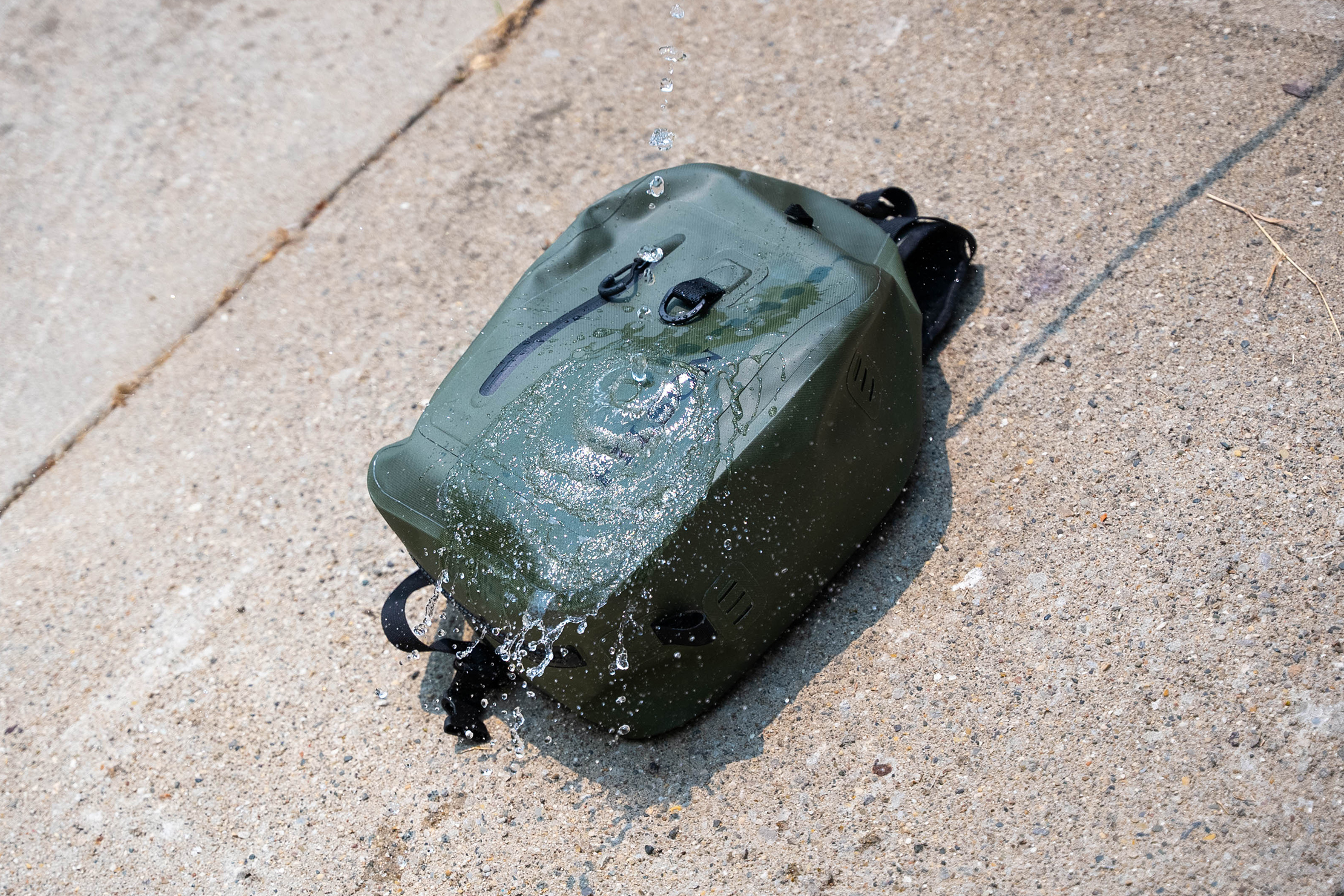
Lastly, waterproof gear isn’t as stylish as non-waterproof gear. This isn’t a catch-all, but is often true for cheaper products. It’s more technical-looking and is often thicker, which isn’t always the most flattering. Again, you have to find a happy medium that works for you when finding something that’s comfortable, stylish, and will keep you dry.
What should I use waterproof gear for?
This will change depending on the kind of trip you’re going on, but we have a few recommendations.
For outdoor adventures, we recommend a waterproof jacket with a smidge of breathability and waterproof shoes (trip-dependent). A pair of quick-dry pants will do, but we prefer to keep our torsos and feet as dry as possible while hitting the trail! You shoulders catch a lot of precipitation and your feet will be hitting puddles, so they’re more likely to get soaked than your pants, which mostly stay vertical. If you’re on a bicycle, you’ll want waterproof pants, too!
If you’re a photographer, get a waterproof case for your memory cards. We dig the Pelican Memory Card Case, as it’s convenient for rainy climates and is super durable, so it’ll protect your memories and work from water, bumps, and knocks.
Overall, most people don’t need much waterproof protection for their everyday essentials. However, in the rainy months or on a trip to a particularly wet place, a phone with a high IP rating, a waterproof pouch to store sensitive essentials, and a packable rain jacket to stow inside your sling or bag will come in handy.
What does water-resistant gear mean?
While waterproofing will keep out all water, water resistance isn’t as stingy. Water-resistant materials don’t prevent penetration, but that doesn’t mean they’re useless in wet climates.
Water-resistant fabrics are typically tightly woven and absorb some water before you can physically feel that they’re wet, but they’ll eventually buckle after enough exposure. They have a much lower pressure threshold regarding the hydrostatic head test we explained earlier.
If you aren’t expecting to get wet or caught in light rain, water-resistant materials will likely suit you fine. If you are looking for a piece of gear that doesn’t need to be waterproof but want some extra peace of mind, water resistance is an excellent option. As a frame of reference, most backpacks and slings are water-resistant, so they’ll keep water out for a brief time but not indefinitely.
The benefits of water-resistant gear
Typically, water-resistant gear is more lightweight and breathable than waterproof gear. This will save you space and weight in your pack and keep you less sweaty while on the go, which is essential for warmer climates.
Generally speaking, if you compare two jackets from the same company and one is waterproof and the other is water resistant, the latter will be cheaper. You’re likely getting more for your money; however, just because something offers more features doesn’t necessarily mean that you need those features. Pay for what you need; not all you can get. Regarding waterproofness; just because there’s a waterproof version of a jacket, doesn’t mean that you need it.
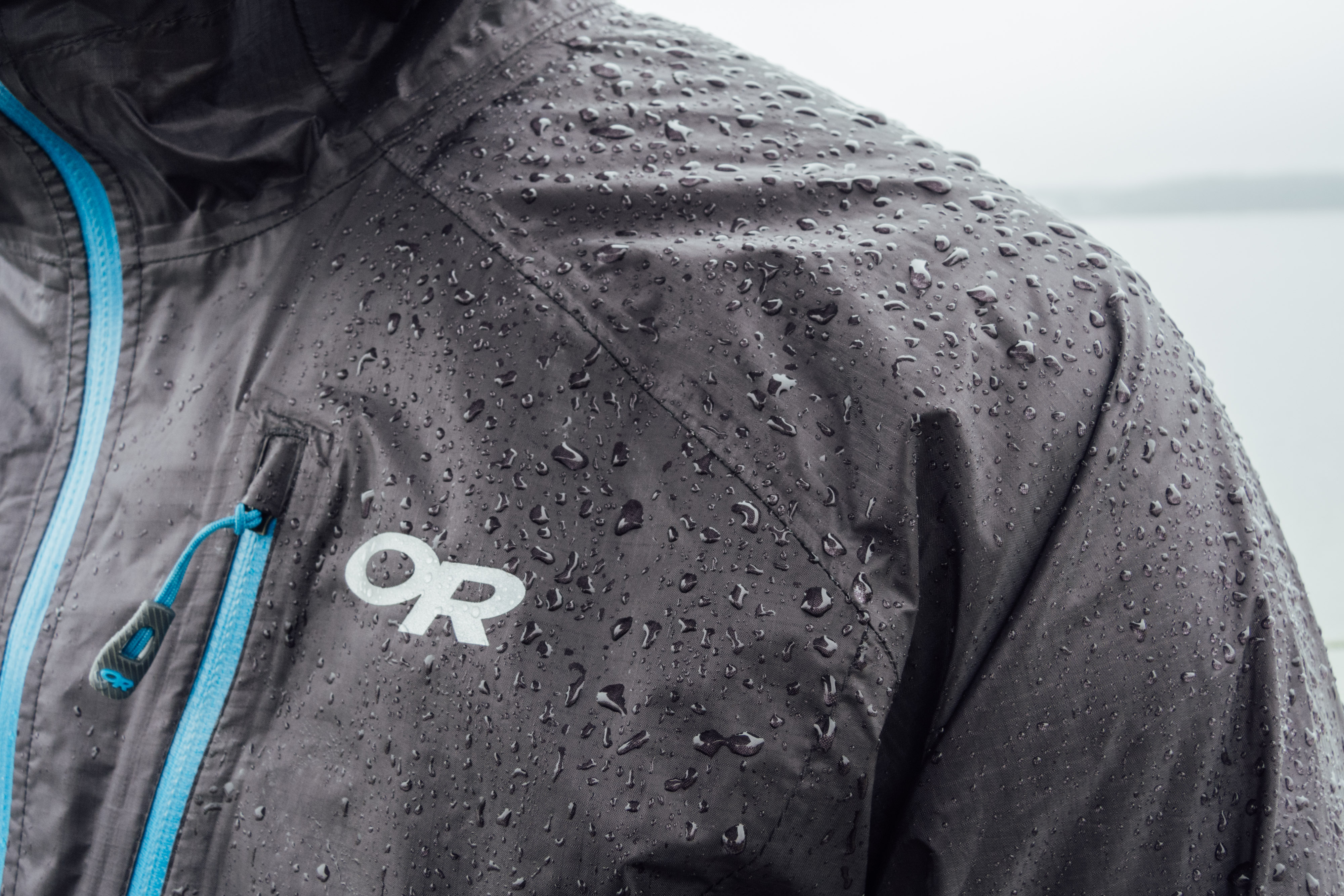
As mentioned in the waterproof section, the more waterproof gear is, the bulkier it usually is. This isn’t an exact science, but we generally find that water-resistant backpacks, travel pants, and jackets can look more stylish than their waterproof siblings. The materials are more limiting and often stiffer, which is harder to work with from a design standpoint.
The drawbacks of water-resistant gear
To keep things simple, water-resistant gear is excellent until it isn’t. Think about when light rain unexpectedly turns into a torrential downpour or if you accidentally spill your water inside the main compartment of your travel backpack. In those situations, your water-resistant gear might not be enough to keep you dry or prevent you from needing to take your MacBook to the Apple Store due to water damage.
Additionally, we think that water-resistant gear can be misleading. While most consumers know the difference between waterproof and water-resistant, some brands call standard fabrics water-resistant even if they don’t have any properties that make the statement true. Labeling something as waterproof is more straightforward to quantify, so it’s easier to look for products with that guarantee, while with water-resistant gear, it isn’t as easy.
Which is better: water-resistant or waterproof?
This question heavily depends on usage, your budget, and the kind of traveler you are. Additionally, it doesn’t have to be one or the other. Most of our packing lists include gear that’s waterproof, water resistant, and lacks protection from liquids.
As mentioned, choosing waterproof gear is a balancing act, and so is the dynamism between it and water-resistant gear. Once you’ve decided where you’re going and what you plan to do, you can determine what works for you and what activities you plan to do.
For example, if you’re going somewhere without much rain, bring water-resistant clothing and a waterproof umbrella or poncho to stay dry just in case the weather forecast lies to you. The water-resistant clothing will handle most days just fine, but you’re prepared for days when it won’t. If you’ll be out all day and there are thunderstorms on the horizon, you’re going to want a waterproof jacket.
Other things to consider
PFAS and their environmental impact
PFAS, or per and poly-fluoroalkyl substances, are a subset of synthetic chemicals that were pioneered into consumer products in the mid-1900s and break down incredibly slowly. Because of their proliferation into our everyday lives over the past century, PFAS are everywhere, from the water rolling through the rivers of Yellowstone to your bloodstream. Though science on the health effects of these chemicals is young, some studies show the harmful health effects of exposure to them. PFAS are commonly found in the waterproofing of jackets and other materials, so they’re a hot topic for travelers.

A single jacket is unlikely to increase your exposure to PFAS. Still, as a sustainable traveler, considering your footprint in the world you’re exploring is worth thinking about. Numerous brands have committed to using less or no PFAS in their DWR (durable water-resistant coating) on clothing, which is a step in the right direction.
We aren’t here to tell you what to do, but this is an essential piece of the puzzle regarding waterproof gear in the modern era.
Water Repellent Gear
In our experience, water-repellent gear is a bit of a mixed bag. It’s often in the middle ground between waterproof and water-resistant, thanks to a coating on the exterior of the materials that helps keep water out. These coatings, as mentioned, often use PFAS and other chemicals.
Over time, these coatings will wear down, and you’ll have a less water-resistant jacket (or other article) than you did before. From here, you’ve got three options. First, you can live with it. It’s now another jacket you can wear when it isn’t raining. Second, you can buy a new coat. Third, you can retreat the article of clothing to make it highly water resistant again. This is our go-to, as it’s better than buying a new jacket.
Retreating Gear
Numerous products are available to re-treat water-repellent coatings. Though we don’t have one specifically to recommend, we’ve had good experiences with Granger products. Regardless of the brand, it’s essential to follow the instructions closely, as you can ruin the article or bag that you’re spraying or washing in the formula if you don’t do it correctly! Additionally, it’s worth checking with the clothing or bag manufacturer to see whether you can do this to the product beforehand!
So there you have it! Hopefully, by now, you better understand what it means for gear to be waterproof, water resistant, and water repellent. Whether it’s London or Laos, you’ll need to stay dry! Enjoy the trip.
